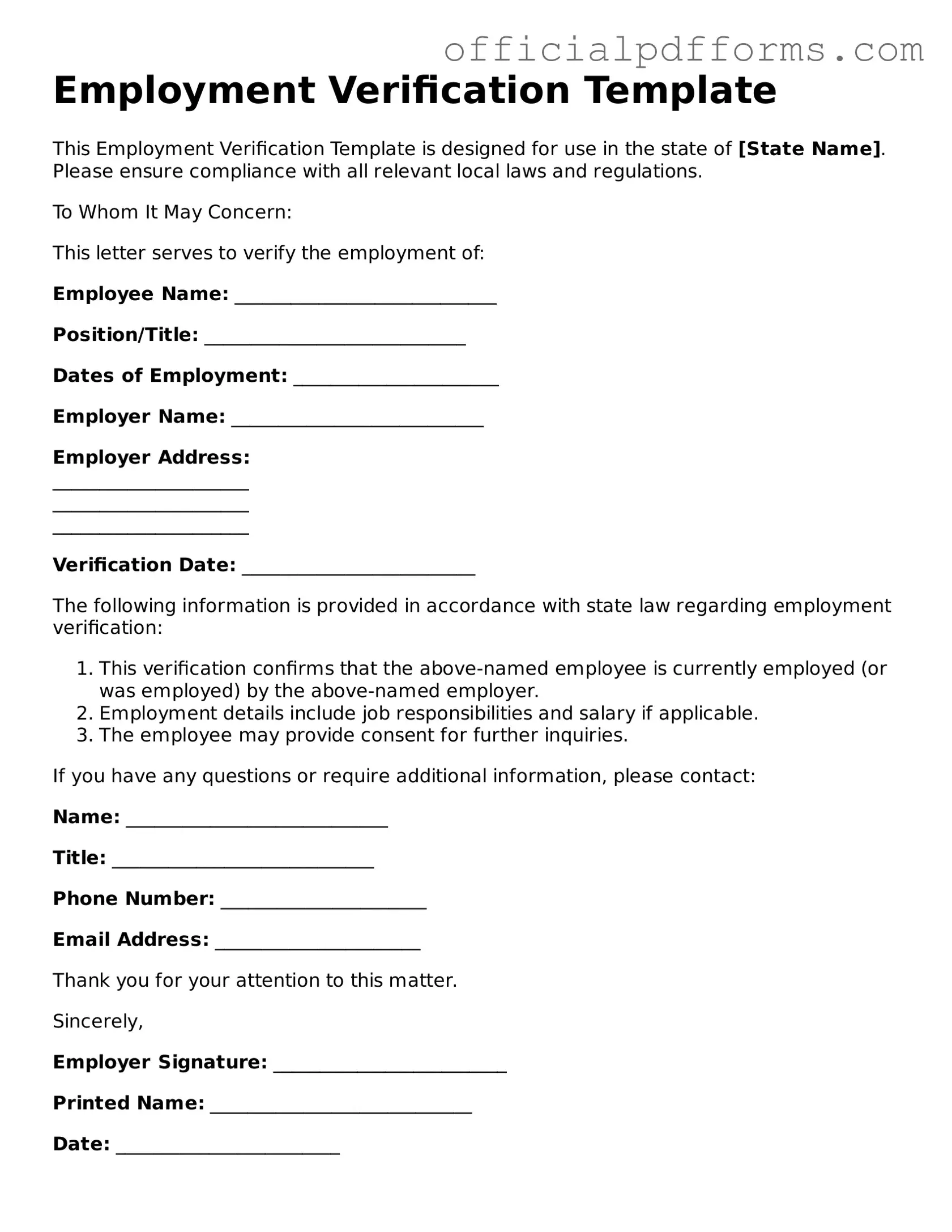An Employment Verification form is a document used to confirm an individual's employment status. This form typically includes details such as the employee's job title, dates of employment, and salary information. Employers or third parties, like lenders, often request this verification to assess an individual's qualifications or financial stability.
Who can request an Employment Verification?
Various parties may request an Employment Verification form, including:
-
Potential employers conducting background checks.
-
Financial institutions assessing loan applications.
-
Property management companies verifying rental applications.
-
Government agencies for benefits or assistance programs.
The Employment Verification form generally includes the following information:
-
Employee's full name.
-
Job title and description.
-
Start and end dates of employment.
-
Current or last salary.
-
Employer's contact information.
The form is usually filled out by the employer or human resources representative. They will provide accurate details regarding the employee's work history and job performance. Employees may need to provide consent for their employer to release this information, ensuring privacy and compliance with regulations.
How long does it take to process an Employment Verification request?
The processing time for an Employment Verification request can vary. Typically, it may take anywhere from a few days to a couple of weeks, depending on the employer's policies and workload. It's advisable to submit requests well in advance to avoid delays, especially if a deadline is approaching.
Yes, an employee has the right to dispute any inaccuracies in the Employment Verification. If discrepancies are found, the employee should contact their employer's HR department immediately. It is essential to address any issues promptly to ensure that the correct information is communicated to requesting parties.
What should I do if my employer does not respond to a verification request?
If an employer does not respond to a verification request, the employee can take several steps:
-
Follow up with the HR department or designated contact person.
-
Check if the request was received and clarify any required information.
-
Consider providing additional documentation to expedite the process.
Is there a fee associated with Employment Verification?
Typically, there is no fee for employment verification requested by potential employers or financial institutions. However, some companies may charge a fee for processing requests, especially if they involve extensive research or documentation. It's best to inquire about any potential costs upfront.
